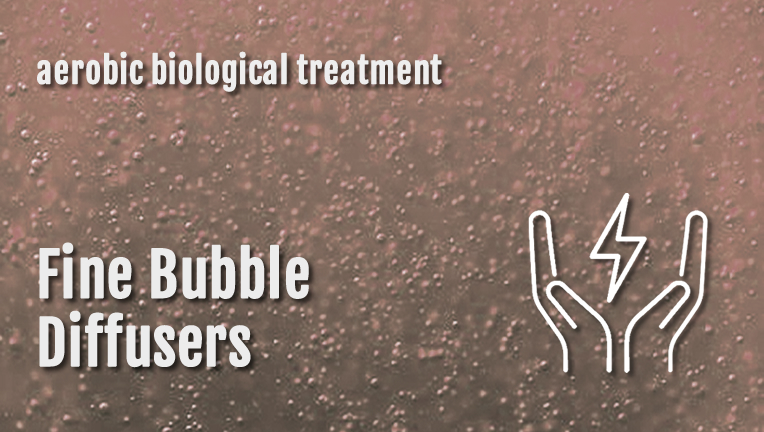Fine bubbles are produced by pressurizing air or oxygen over a porous material or a plastic or elastomeric membrane perforated with tiny holes.
One factor to consider when using fine bubble diffusers is that the air must be filtered to prevent clogging.
Modern high-efficiency fine bubble diffusers produce bubbles with average diameters of 0.8 mm. Bubble size is one of the most important factors for the efficiency of an aeration system. The smaller the bubbles, the greater the contact surface area per volume of air. Furthermore, their rising velocity will be slower, leading to a longer contact time.
The oxygen transfer efficiency of fine bubble diffusers also depends on other parameters, such as:
- Diffuser type, size, and shape
- Submergence depth
- Effluent temperature
- Air flow
- Tank geometry, including the air cap and diffuser arrangement (flow patterns)
- Effluent characteristics
Fine Bubble Diffuser Efficiency
SOTE stands for Standard Oxygen Transfer Efficiency and is the parameter used for measuring diffusers’ aeration efficiency. SOTE is expressed as a percentage and is simply the ratio of the mass of oxygen supplied to the mass of oxygen transferred. (Standard conditions are 20°C and 1 atm. of pressure.)
Diffusers with a higher SOTE will be more efficient, and therefore the required air flow to the reactor will be lower to achieve the same oxygen transfer under equal temperature and pressure conditions. Consequently, less energy will be required to produce less air.
The standard for determining diffuser efficiency is (ASCE/EWRI 2-06) Measurement of Oxygen Transfer in Clean Water.
Reputable diffuser manufacturers publish SOTE data or graphs that allow engineers to design aeration systems. The graph shows an example of the Flexair® EDI T diffusers.
The SOTE values reported by manufacturers will allow for a peer-to-peer comparison between diffusers from different manufacturers under equal, standard conditions. However, the actual efficiency of the biological system will depend on the specific characteristics of your project, which is a more complex design process that will require analysis of alternatives and economic analysis.
In conclusion, when undertaking a plant rehabilitation where fine bubble diffusers will be introduced, a prior coordinated design effort will be necessary, including the technical information and experience of the diffuser manufacturers.

